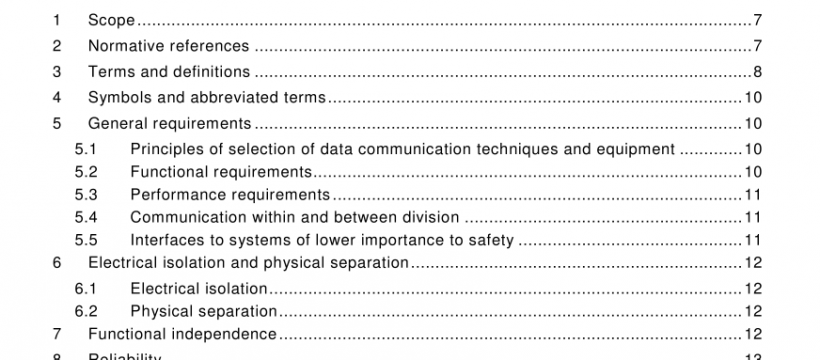EN IEC 61500:2019 pdf free download
EN IEC 61500:2019 pdf free download.Nuclear power plants – Instrumentation and control systems important to safety – Data communication in systems performing category A functions
9 Qualification
Class 1 communication hardware of systems shall be qualified in accordance with the relevant requirements of IEC/IEEE 60780-323 (environmental qualification), IEC 60980 (seismic qualification), and an appropriate EMC Standard such as IEC 62003 or the IEC 61 000 series (EMC Testing).
Communication of systems performing category A functions shall be designed, verified and validated in accordance with nuclear standards IEC 61 51 3, IEC 60880, IEC 60987, IEC 62645 and IEC 62566. The suitability of the selected qualification standard shall be analysed and justified by formal documentation.
1 0 Maintenance and modification
Communication of systems performing category A functions shall be maintained and modified in accordance with IEC 61 51 3, IEC 60880, IEC 60987, IEC 62645 and IEC 62566.
If one of the communication nodes fails, prompt replacement of a part should be possible during power operation of the plant. A communication node replacement should be accomplished in a simple manner without adversely affecting the operability of the system and within the targeted availability of the system.
In such cases, means shall be provided to confirm the correct operation of the replacement node.
Modifications of the data communication equipment shall be done under the strict procedures of the plant modification process.
Modifications shall be based on clear requirements. These modifications shall be confirmed to be in accordance with the original safety, functional and performance requirements of the data communication equipment by suitable verification consistent with IEC 61 51 3, IEC 60880, IEC 60987, IEC 62645 and IEC 62566.
When modifications have been made, the data communication shall be proven to meet their functional and performance requirements by testing prior to the installation at the plant (e.g., in a representative testbed regarding functional testing), and after installation into the target system (e.g., meet the system performance and interface requirements) (see 8.2).
EN IEC 61500:2019 pdf free download
